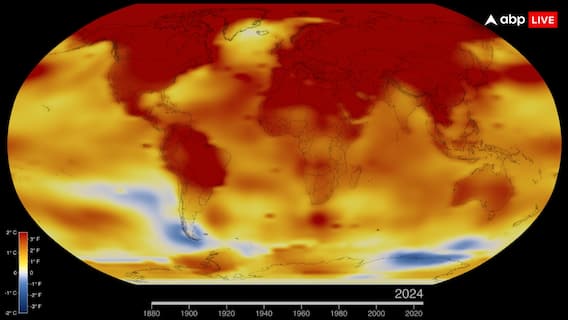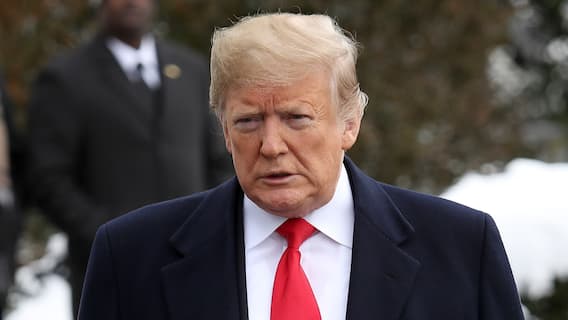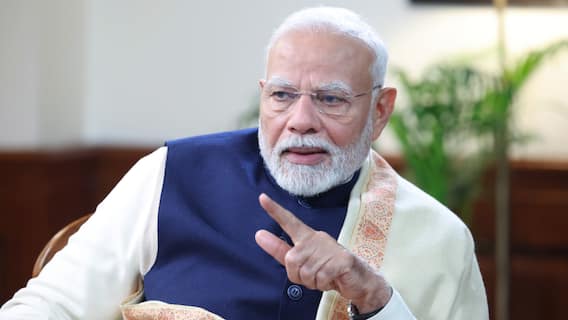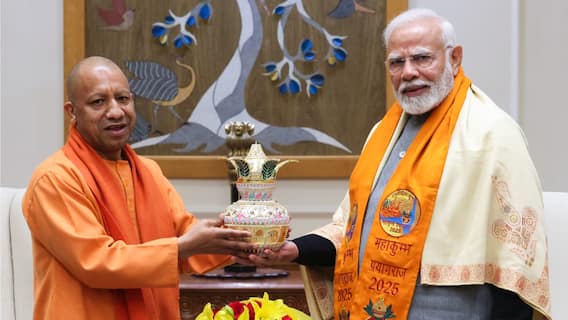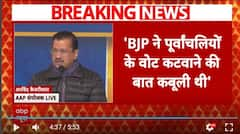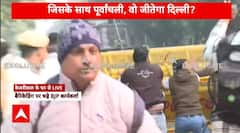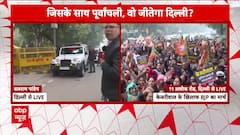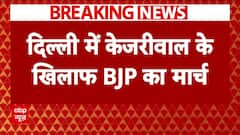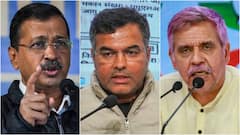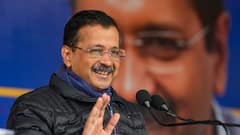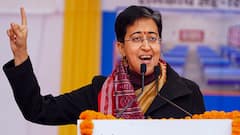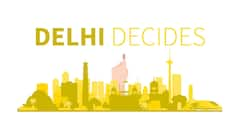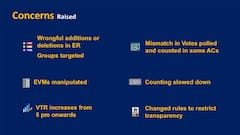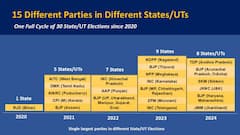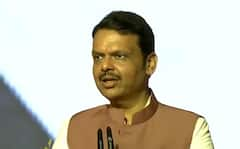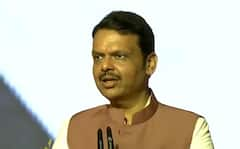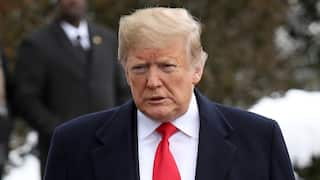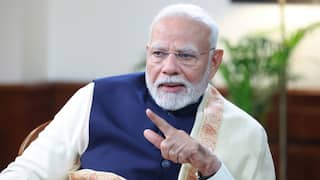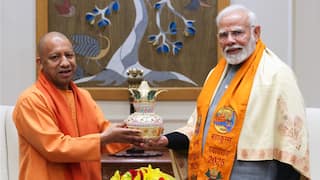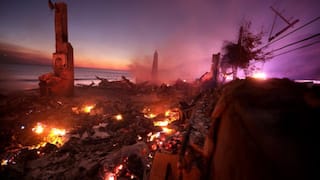Explorer
Advertisement
Interesting facts you did not know about India's 'big-fat' Lok Sabha elections
While the incumbent Narendra Modi government is seeking a second straight term, Congress and other Opposition parties including SP, BSP, RJD, TMC among others have left no stones unturned to stall Bharatiya Janata Party’s (BJP) victory run.

More than 90 crore people are eligible to exercise their franchise during country’s 17th Lok Sabha Elections. (Image: Getty)
The incumbent Narendra Modi government is seeking a second straight term
This will be the ‘most expensive’ General Elections in the history of independent India
Total voters in India are nearly the combined population of entire Europe and Brazil
Lok Sabha Elections 2019: The festival of voting is here and India has kick-started the world’s largest democratic exercise – the Lok Sabha Elections 2019. It is the biggest voting event of the world with over 90 crore voters exercising their franchise to elect the 543-member Lok Sabha. While the incumbent Narendra Modi government is seeking a second straight term, Congress and other Opposition parties including Samajwadi Party (SP), Bahujan Samaj Party (BSP), Rashtriya Janata Dal (RJD), Trinamool Congress (TMC) among others have left no stones unturned to stall Bharatiya Janata Party’s (BJP) victory run. The elections will be conducted in seven phases from April 11 till May 19 and the counting of votes will be done on May 23.
As the country is all geared up for a high-voltage electoral combat, we have compiled some interesting facts and records related to the General Elections held in the country with over 1.3 billion people.
Skyhigh eligible voters on the roll
 (Image: Getty)
i) As per reports, more than 90 crore people are eligible to exercise their franchise during country’s 17th Lok Sabha Elections. This is a massive increase of around 9 crore people compared to the General Elections held in 2014. Out of the total, around 13 crore voters this time will be first-time voters. Total voters in India are nearly the combined population of entire Europe and Brazil. Around 43 crores of total voters in India are women. However, the actual number of people who vote is far less than the total.
ii) During the 2014 General Elections, there were over than 83 crore registered voters, but reports suggest that only about 53 crore or 66 per cent of the eligible voters then, came out to vote. The 2014 Lok Sabha polls saw the highest turnout ever in the history at 66.4 per cent. However, it meant still a huge 27.3 crore electorates did not vote. Previous Lok Sabha polls had as many as 8,251 candidates from 464 political parties across the country.
iii) The fight is for 543 of the 545 seats in the Lok Sabha and the remaining two seats are reserved for the Anglo-Indian community. These members are nominated by the President of India.
Big Fat Indian Election and its Preparation
(Image: Getty)
i) As per reports, more than 90 crore people are eligible to exercise their franchise during country’s 17th Lok Sabha Elections. This is a massive increase of around 9 crore people compared to the General Elections held in 2014. Out of the total, around 13 crore voters this time will be first-time voters. Total voters in India are nearly the combined population of entire Europe and Brazil. Around 43 crores of total voters in India are women. However, the actual number of people who vote is far less than the total.
ii) During the 2014 General Elections, there were over than 83 crore registered voters, but reports suggest that only about 53 crore or 66 per cent of the eligible voters then, came out to vote. The 2014 Lok Sabha polls saw the highest turnout ever in the history at 66.4 per cent. However, it meant still a huge 27.3 crore electorates did not vote. Previous Lok Sabha polls had as many as 8,251 candidates from 464 political parties across the country.
iii) The fight is for 543 of the 545 seats in the Lok Sabha and the remaining two seats are reserved for the Anglo-Indian community. These members are nominated by the President of India.
Big Fat Indian Election and its Preparation
 (Image: Getty)
i) Holding elections in India, the world's seventh largest nation by area and second largest by population is a complex task altogether. According to EC, around 10 lakh polling stations across the country have been installed, which is 10 per cent higher than the last elections. To conduct such mammoth exercise of voting, the EC had appointed over 5 lakh full-time and part-time officials and security forces. This year, the numbers are likely to go beyond.
ii) More than 80,000 stations surveyed by the ECI did not have mobile connectivity and around 20,000 booths were located in the forest or semi-forest areas last year. In a first this time, the ECI has set up a polling station in the Gir forest of Gujarat, home to Asiatic lions, just for one voter.
GoC (Game of Crores)
(Image: Getty)
i) Holding elections in India, the world's seventh largest nation by area and second largest by population is a complex task altogether. According to EC, around 10 lakh polling stations across the country have been installed, which is 10 per cent higher than the last elections. To conduct such mammoth exercise of voting, the EC had appointed over 5 lakh full-time and part-time officials and security forces. This year, the numbers are likely to go beyond.
ii) More than 80,000 stations surveyed by the ECI did not have mobile connectivity and around 20,000 booths were located in the forest or semi-forest areas last year. In a first this time, the ECI has set up a polling station in the Gir forest of Gujarat, home to Asiatic lions, just for one voter.
GoC (Game of Crores)
 (Image: Getty)
i) The Lok Sabha elections this year is expected to be the ‘most expensive’ in the history of elections held in India. Though it is tough to predict how much money will ultimately be spent, experts believe that the total spending will easily go beyond $5 billion – an estimated cost of 2014 Lok Sabha polls.
ii) According to the Election Commission, the total cost of the entire process in 2014 Lok Sabha Polls was Rs 38.7 billion ($552 million) and the figures are expected to increase this time. Interestingly, the first Lok Sabha Election in independent India in 1952 cost around Rs 10.45 crore. The cost of the Lok Sabha elections is borne by the Government of India. Only the honorariums of the poll observers are paid by the Election Commission.
Wait what! Election Commission has new rules...
(Image: Getty)
i) The Lok Sabha elections this year is expected to be the ‘most expensive’ in the history of elections held in India. Though it is tough to predict how much money will ultimately be spent, experts believe that the total spending will easily go beyond $5 billion – an estimated cost of 2014 Lok Sabha polls.
ii) According to the Election Commission, the total cost of the entire process in 2014 Lok Sabha Polls was Rs 38.7 billion ($552 million) and the figures are expected to increase this time. Interestingly, the first Lok Sabha Election in independent India in 1952 cost around Rs 10.45 crore. The cost of the Lok Sabha elections is borne by the Government of India. Only the honorariums of the poll observers are paid by the Election Commission.
Wait what! Election Commission has new rules...
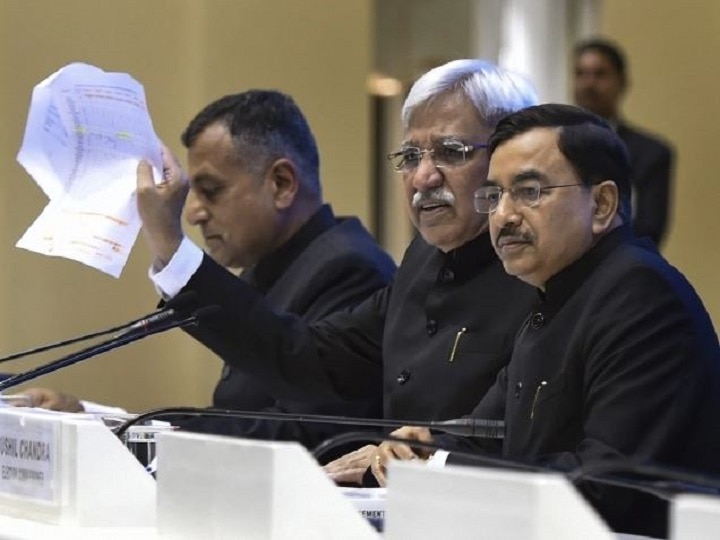 (Image: PTI)
i) In a first, candidates with criminal antecedents will have to publish information in this regard in newspapers and through TV channels on three occasions during the campaign period.
ii) The Electronic Voting Machines (EVM) and postal ballot papers would for the first time carry photographs of all the candidates to help voters identify the political leaders in the fray.
iii) In the 2014 Lok Sabha polls, Voter-verified Paper Audit Trails (VVPATs) were used in eight constituencies. This time, VVPATs will be used in all the constituencies.
iv) The ECI has also installed a polling booth in the Gir forest of Gujarat, home to Asiatic lions, just for one voter.
About the voters
(Image: PTI)
i) In a first, candidates with criminal antecedents will have to publish information in this regard in newspapers and through TV channels on three occasions during the campaign period.
ii) The Electronic Voting Machines (EVM) and postal ballot papers would for the first time carry photographs of all the candidates to help voters identify the political leaders in the fray.
iii) In the 2014 Lok Sabha polls, Voter-verified Paper Audit Trails (VVPATs) were used in eight constituencies. This time, VVPATs will be used in all the constituencies.
iv) The ECI has also installed a polling booth in the Gir forest of Gujarat, home to Asiatic lions, just for one voter.
About the voters
 (Image: Getty)
i) The number of eligible voters has gone up by more than five times since the first general elections.
ii) Lok Sabha Election 2019 will have over 13 crore first-time voters. These voters are in the age group of 18-19 years and constitute 1.66 per cent of the total electorate. Two-thirds of Indians are under 35.
iii) Transgender persons enrol in the electoral rolls as 'Others' on the gender category. This time, the number of electors enrolled as Others gender is above 38 thousand.
iv) Comparison of India’s first Lok Sabha Elections with the last one:
v) The first Lok Sabha elections in 1952 cost around Rs 10.45 crore, while the 2014 general elections cost almost Rs 3,870.3 crore. The first Lok Sabha elections were contested for 489 seats. The number of constituencies was increased to 543 in 1977.
vi) A total of 53 parties and 533 Independents contested for the 489 seats in the 1952 elections. In 2014, 464 political parties and 3,234 candidates contested for the 543 seats. The total number of voters for 2019 Lok Sabha elections have gone up by 84.3 million since the 2014 polls.
Lok Sabha Election 2019: Online process to register to vote
For online registration, follow these steps:
Step 1: Visit https://www.nvsp.in/ for voter registration
Step 2: Fill Form 6 that helps 'First-time voters' and 'voters who have shifted to another constituency' and submit
Step 3: Upload your ID and address proof along with your photograph. Once all the details are filled in, simply scroll down and hit submit
Happy Elections!
(Image: Getty)
i) The number of eligible voters has gone up by more than five times since the first general elections.
ii) Lok Sabha Election 2019 will have over 13 crore first-time voters. These voters are in the age group of 18-19 years and constitute 1.66 per cent of the total electorate. Two-thirds of Indians are under 35.
iii) Transgender persons enrol in the electoral rolls as 'Others' on the gender category. This time, the number of electors enrolled as Others gender is above 38 thousand.
iv) Comparison of India’s first Lok Sabha Elections with the last one:
v) The first Lok Sabha elections in 1952 cost around Rs 10.45 crore, while the 2014 general elections cost almost Rs 3,870.3 crore. The first Lok Sabha elections were contested for 489 seats. The number of constituencies was increased to 543 in 1977.
vi) A total of 53 parties and 533 Independents contested for the 489 seats in the 1952 elections. In 2014, 464 political parties and 3,234 candidates contested for the 543 seats. The total number of voters for 2019 Lok Sabha elections have gone up by 84.3 million since the 2014 polls.
Lok Sabha Election 2019: Online process to register to vote
For online registration, follow these steps:
Step 1: Visit https://www.nvsp.in/ for voter registration
Step 2: Fill Form 6 that helps 'First-time voters' and 'voters who have shifted to another constituency' and submit
Step 3: Upload your ID and address proof along with your photograph. Once all the details are filled in, simply scroll down and hit submit
Happy Elections!
 (Image: Getty)
i) As per reports, more than 90 crore people are eligible to exercise their franchise during country’s 17th Lok Sabha Elections. This is a massive increase of around 9 crore people compared to the General Elections held in 2014. Out of the total, around 13 crore voters this time will be first-time voters. Total voters in India are nearly the combined population of entire Europe and Brazil. Around 43 crores of total voters in India are women. However, the actual number of people who vote is far less than the total.
ii) During the 2014 General Elections, there were over than 83 crore registered voters, but reports suggest that only about 53 crore or 66 per cent of the eligible voters then, came out to vote. The 2014 Lok Sabha polls saw the highest turnout ever in the history at 66.4 per cent. However, it meant still a huge 27.3 crore electorates did not vote. Previous Lok Sabha polls had as many as 8,251 candidates from 464 political parties across the country.
iii) The fight is for 543 of the 545 seats in the Lok Sabha and the remaining two seats are reserved for the Anglo-Indian community. These members are nominated by the President of India.
Big Fat Indian Election and its Preparation
(Image: Getty)
i) As per reports, more than 90 crore people are eligible to exercise their franchise during country’s 17th Lok Sabha Elections. This is a massive increase of around 9 crore people compared to the General Elections held in 2014. Out of the total, around 13 crore voters this time will be first-time voters. Total voters in India are nearly the combined population of entire Europe and Brazil. Around 43 crores of total voters in India are women. However, the actual number of people who vote is far less than the total.
ii) During the 2014 General Elections, there were over than 83 crore registered voters, but reports suggest that only about 53 crore or 66 per cent of the eligible voters then, came out to vote. The 2014 Lok Sabha polls saw the highest turnout ever in the history at 66.4 per cent. However, it meant still a huge 27.3 crore electorates did not vote. Previous Lok Sabha polls had as many as 8,251 candidates from 464 political parties across the country.
iii) The fight is for 543 of the 545 seats in the Lok Sabha and the remaining two seats are reserved for the Anglo-Indian community. These members are nominated by the President of India.
Big Fat Indian Election and its Preparation
 (Image: Getty)
i) Holding elections in India, the world's seventh largest nation by area and second largest by population is a complex task altogether. According to EC, around 10 lakh polling stations across the country have been installed, which is 10 per cent higher than the last elections. To conduct such mammoth exercise of voting, the EC had appointed over 5 lakh full-time and part-time officials and security forces. This year, the numbers are likely to go beyond.
ii) More than 80,000 stations surveyed by the ECI did not have mobile connectivity and around 20,000 booths were located in the forest or semi-forest areas last year. In a first this time, the ECI has set up a polling station in the Gir forest of Gujarat, home to Asiatic lions, just for one voter.
GoC (Game of Crores)
(Image: Getty)
i) Holding elections in India, the world's seventh largest nation by area and second largest by population is a complex task altogether. According to EC, around 10 lakh polling stations across the country have been installed, which is 10 per cent higher than the last elections. To conduct such mammoth exercise of voting, the EC had appointed over 5 lakh full-time and part-time officials and security forces. This year, the numbers are likely to go beyond.
ii) More than 80,000 stations surveyed by the ECI did not have mobile connectivity and around 20,000 booths were located in the forest or semi-forest areas last year. In a first this time, the ECI has set up a polling station in the Gir forest of Gujarat, home to Asiatic lions, just for one voter.
GoC (Game of Crores)
 (Image: Getty)
i) The Lok Sabha elections this year is expected to be the ‘most expensive’ in the history of elections held in India. Though it is tough to predict how much money will ultimately be spent, experts believe that the total spending will easily go beyond $5 billion – an estimated cost of 2014 Lok Sabha polls.
ii) According to the Election Commission, the total cost of the entire process in 2014 Lok Sabha Polls was Rs 38.7 billion ($552 million) and the figures are expected to increase this time. Interestingly, the first Lok Sabha Election in independent India in 1952 cost around Rs 10.45 crore. The cost of the Lok Sabha elections is borne by the Government of India. Only the honorariums of the poll observers are paid by the Election Commission.
Wait what! Election Commission has new rules...
(Image: Getty)
i) The Lok Sabha elections this year is expected to be the ‘most expensive’ in the history of elections held in India. Though it is tough to predict how much money will ultimately be spent, experts believe that the total spending will easily go beyond $5 billion – an estimated cost of 2014 Lok Sabha polls.
ii) According to the Election Commission, the total cost of the entire process in 2014 Lok Sabha Polls was Rs 38.7 billion ($552 million) and the figures are expected to increase this time. Interestingly, the first Lok Sabha Election in independent India in 1952 cost around Rs 10.45 crore. The cost of the Lok Sabha elections is borne by the Government of India. Only the honorariums of the poll observers are paid by the Election Commission.
Wait what! Election Commission has new rules...
 (Image: PTI)
i) In a first, candidates with criminal antecedents will have to publish information in this regard in newspapers and through TV channels on three occasions during the campaign period.
ii) The Electronic Voting Machines (EVM) and postal ballot papers would for the first time carry photographs of all the candidates to help voters identify the political leaders in the fray.
iii) In the 2014 Lok Sabha polls, Voter-verified Paper Audit Trails (VVPATs) were used in eight constituencies. This time, VVPATs will be used in all the constituencies.
iv) The ECI has also installed a polling booth in the Gir forest of Gujarat, home to Asiatic lions, just for one voter.
About the voters
(Image: PTI)
i) In a first, candidates with criminal antecedents will have to publish information in this regard in newspapers and through TV channels on three occasions during the campaign period.
ii) The Electronic Voting Machines (EVM) and postal ballot papers would for the first time carry photographs of all the candidates to help voters identify the political leaders in the fray.
iii) In the 2014 Lok Sabha polls, Voter-verified Paper Audit Trails (VVPATs) were used in eight constituencies. This time, VVPATs will be used in all the constituencies.
iv) The ECI has also installed a polling booth in the Gir forest of Gujarat, home to Asiatic lions, just for one voter.
About the voters
 (Image: Getty)
i) The number of eligible voters has gone up by more than five times since the first general elections.
ii) Lok Sabha Election 2019 will have over 13 crore first-time voters. These voters are in the age group of 18-19 years and constitute 1.66 per cent of the total electorate. Two-thirds of Indians are under 35.
iii) Transgender persons enrol in the electoral rolls as 'Others' on the gender category. This time, the number of electors enrolled as Others gender is above 38 thousand.
iv) Comparison of India’s first Lok Sabha Elections with the last one:
v) The first Lok Sabha elections in 1952 cost around Rs 10.45 crore, while the 2014 general elections cost almost Rs 3,870.3 crore. The first Lok Sabha elections were contested for 489 seats. The number of constituencies was increased to 543 in 1977.
vi) A total of 53 parties and 533 Independents contested for the 489 seats in the 1952 elections. In 2014, 464 political parties and 3,234 candidates contested for the 543 seats. The total number of voters for 2019 Lok Sabha elections have gone up by 84.3 million since the 2014 polls.
Lok Sabha Election 2019: Online process to register to vote
For online registration, follow these steps:
Step 1: Visit https://www.nvsp.in/ for voter registration
Step 2: Fill Form 6 that helps 'First-time voters' and 'voters who have shifted to another constituency' and submit
Step 3: Upload your ID and address proof along with your photograph. Once all the details are filled in, simply scroll down and hit submit
Happy Elections!
(Image: Getty)
i) The number of eligible voters has gone up by more than five times since the first general elections.
ii) Lok Sabha Election 2019 will have over 13 crore first-time voters. These voters are in the age group of 18-19 years and constitute 1.66 per cent of the total electorate. Two-thirds of Indians are under 35.
iii) Transgender persons enrol in the electoral rolls as 'Others' on the gender category. This time, the number of electors enrolled as Others gender is above 38 thousand.
iv) Comparison of India’s first Lok Sabha Elections with the last one:
v) The first Lok Sabha elections in 1952 cost around Rs 10.45 crore, while the 2014 general elections cost almost Rs 3,870.3 crore. The first Lok Sabha elections were contested for 489 seats. The number of constituencies was increased to 543 in 1977.
vi) A total of 53 parties and 533 Independents contested for the 489 seats in the 1952 elections. In 2014, 464 political parties and 3,234 candidates contested for the 543 seats. The total number of voters for 2019 Lok Sabha elections have gone up by 84.3 million since the 2014 polls.
Lok Sabha Election 2019: Online process to register to vote
For online registration, follow these steps:
Step 1: Visit https://www.nvsp.in/ for voter registration
Step 2: Fill Form 6 that helps 'First-time voters' and 'voters who have shifted to another constituency' and submit
Step 3: Upload your ID and address proof along with your photograph. Once all the details are filled in, simply scroll down and hit submit
Happy Elections!
Follow Election 2025 News on ABP Live for more latest stories and trending topics. Watch breaking news and top headlines online on ABP News LIVE TV
View More
Advertisement
Trending News
Advertisement
Advertisement
Top Headlines
Science
World
India
India
Advertisement


Saswat PanigrahiSaswat Panigrahi is a multimedia journalist
Opinion
Personal Corner
Top Articles
Top Reels
ABP LIVE
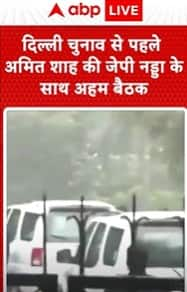
Delhi Election 2025: Amit Shah Holds Key Meeting at JP Nadda's Residence Ahead of Delhi Elections
ABP LIVE
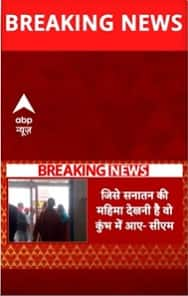
CM Yogi Arrives At Maha Kumbh To witness Sanatan Dharma’s Glory
ABP LIVE
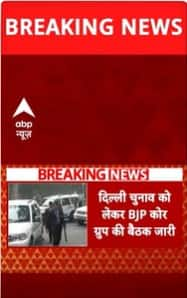
Delhi Election: BJP Core Group Meeting on Delhi Elections Held at JP Nadda's Residence
ABP LIVE
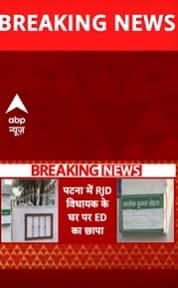
ED Raids Former RJD Leader Alok Mehta's House
ABP LIVE
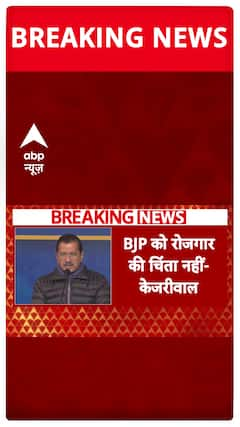
Delhi Elections 2025: Kejriwal’s New Guarantee, Security Guards to Be Appointed Under RWA

